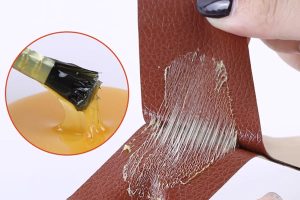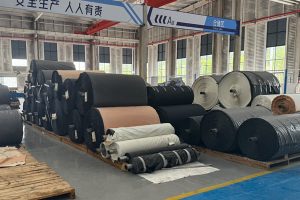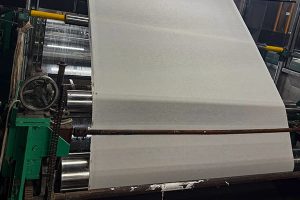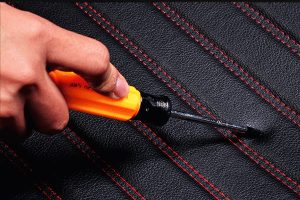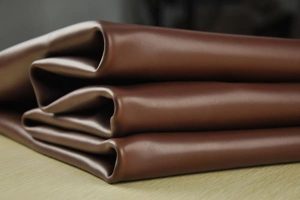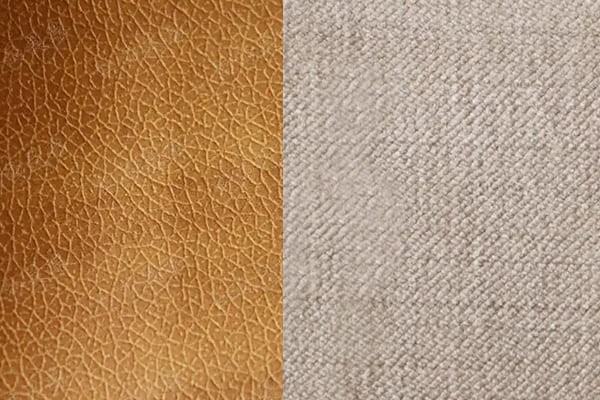
Welcome to the wild world of fabrics, where the debate rages on about what truly qualifies as “natural.” Imagine a fabric that doesn’t need to be woven, knitted, or even spun—yes, we’re talking about non-woven fabrics, the free spirits of the textile realm! Picture them lounging in a sunbeam, blissfully unstructured, while traditional fabrics are all tied up in knots. But wait! Just when you think you’ve got non-woven fabrics all figured out, along comes leather, strutting in with its rich history and undeniable charm, leaving us to wonder: is leather a non-woven fabric, or does it play by its own rules? Join us on this fabric adventure as we unravel the origins of leather, explore its unique characteristics, and tackle the age-old question of what makes a fabric truly “fabric.” Prepare for a journey filled with surprising twists, playful myths, and a whole lot of texture!
Defining Non-Woven Fabrics: What Does It Mean?
Non-woven fabrics are materials that are not made by weaving or knitting fibers together, but rather by bonding or felting them. This process can involve various methods, including heat, chemical bonding, or mechanical entanglement. Non-woven fabrics are widely used in applications ranging from medical supplies to home furnishings, due to their lightweight, versatile nature and cost-effectiveness. They often lack the traditional grain structure of woven fabrics, which contributes to their unique properties, such as water resistance and breathability. This distinction sets the stage for understanding how leather fits into the fabric classification system, particularly in its manufacturing and applications.
Leather's Classification: Understanding Woven vs. Non-Woven
When it comes to categorizing materials, leather is considered a unique entity that does not fit neatly into the woven or non-woven categories. Unlike non-woven fabrics, which are made from synthetic or natural fibers that are bonded together, leather is derived from animal hides. The transformation of these hides into leather involves a complex tanning process that preserves the skin and enhances its durability. While leather does not undergo weaving, it possesses distinct characteristics that differentiate it from traditional non-woven fabrics. For instance, leather has a natural grain pattern and texture that contribute to its aesthetic appeal and tactile qualities, which are often sought after in fashion and design. Thus, while leather shares some functional aspects with non-woven fabrics, its origins and production processes set it apart as a distinct material.
The Production Process: How Leather Is Made
The journey from raw hide to finished leather is a fascinating process that combines both natural and artisanal techniques. Initially, the hides are sourced from various animals, with cattle being the most common. Once harvested, the hides undergo a series of cleaning and preservation steps to remove hair, flesh, and any impurities. This is followed by the tanning process, which can take several forms, such as vegetable tanning or chrome tanning. Vegetable tanning uses tannins from plant sources and is known for its environmentally friendly approach, producing rich, textured leather. Conversely, chrome tanning is quicker and produces softer leather, though it involves chemicals that can have environmental impacts.
After tanning, the leather may be dyed, embossed, or treated to achieve specific finishes, enhancing its appearance and usability. The final product can be used in various applications, from luxury handbags to upholstery. The entire process not only highlights the craftsmanship involved in leather production but also emphasizes the natural characteristics that define this unique material. Unlike non-woven fabrics, leather’s production reflects a deep connection to both nature and skilled artisanship, resulting in a fabric that is both durable and aesthetically pleasing.
Leather vs. Non-Woven Materials: Key Differences Explored
Leather and non-woven materials are fundamentally different in composition, production methods, and characteristics. Leather is a natural material derived from animal hides, recognized for its durability, breathability, and luxurious feel. In contrast, non-woven materials are typically made from synthetic or natural fibers that are bonded together through mechanical, chemical, or thermal processes. This results in a fabric that is often lightweight and versatile but may lack the longevity and tactile richness associated with leather. Additionally, while leather develops a unique patina over time, adding character and depth, non-woven fabrics tend to retain their original appearance, making leather a more desirable option for high-end fashion and upholstery. Understanding these differences is crucial for consumers seeking materials that align with their needs and preferences.
Applications of Leather: Where Does It Fit in the Fabric World?
Leather occupies a prominent place in the fabric world, with applications ranging from fashion to home décor. In the fashion industry, leather is favored for its durability and timeless appeal, appearing in items such as jackets, handbags, shoes, and belts. Its ability to age gracefully adds to its allure, making leather products not only stylish but also long-lasting. Beyond fashion, leather is used in upholstery for furniture, providing a touch of luxury and comfort to living spaces. Its durability makes it an ideal choice for items subjected to frequent use, such as car interiors and luxury vehicles. Furthermore, leather’s natural insulating properties also make it suitable for various outdoor gear and accessories. In essence, leather’s versatility and aesthetic qualities ensure its continued relevance across diverse applications.
The Myths and Realities: Debunking Common Misconceptions About Leather
Despite its popularity, leather is often surrounded by misconceptions that can cloud consumer understanding. One common myth is that all leather is produced through environmentally harmful processes. While some tanning methods do use harsh chemicals, there are sustainable alternatives, such as vegetable tanning, which minimizes environmental impact. Another misconception is that leather is a byproduct of the meat industry, solely for fashion purposes. In reality, leather production is part of a circular economy that utilizes materials from animals raised for food, thus reducing waste. Additionally, some believe that leather requires excessive maintenance compared to synthetic alternatives. While leather does benefit from proper care, it often lasts significantly longer than non-woven materials, ultimately making it a more economical choice. By addressing these myths, consumers can make informed decisions, appreciating leather for its unique qualities and understanding its role in a sustainable future.
Conclusion
As we wrap up our exploration of leather and non-woven fabrics, it’s clear that the world of textiles is anything but black and white—or, in this case, woven and non-woven. Leather, with its rich history and artisanal craftsmanship, stands apart as a testament to nature’s artistry and human innovation. While non-woven fabrics may shine in their versatility and cost-effectiveness, they often lack the character and longevity that leather provides. So, whether you’re drawn to the luxurious feel of a leather jacket or the practicality of a non-woven tote, understanding these distinctions empowers you to make choices that align with your style and values. In the end, both leather and non-woven materials have their own unique charm, proving that in the fabric of life, there’s always room for a little variety—and perhaps a dash of leather, just for good measure!


